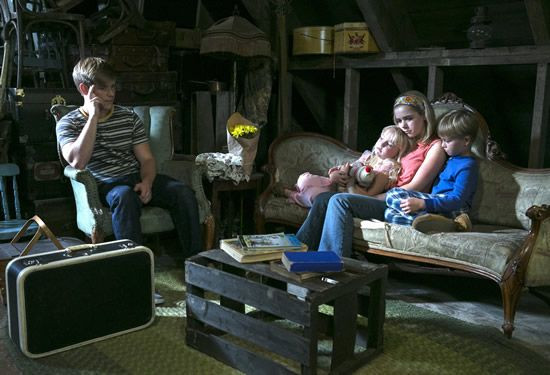
V.C. Andrews’ “Flowers in the Attic” was first banned from our library list way back in 1979, but that didn’t stop my sisters and myself from sneaking the paperback novel into our rooms to read under the cover of darkness. I never knew why I had become so entranced with the contemplative inner dialogue of Cathy, or why despite Chris’s easy acceptance of such a tragic situation, I wanted and needed to know more. I recently re-read the first novel of V.C. Andrews infamous Dollangager series in order to not only fully appreciate the film adaption on Lifetime, but to discover why exactly Cathy had taught me all that she did.
In spite of its themes of abuse and incest, “Flowers in the Attic” was an inimitably comforting story. V.C. Andrews’s diction contained an emotional element, in addition to the shock and awe moments that the novel has now become infamous for, Cathy was I and I was Cathy, suffering along side. As the narrator, we see the story unfold through her 12 year old eyes, as the days of confinement grow longer, her viewpoint alters however she never really waivers in her fierce opinions and eventually anger. “Flowers in the Attic” became, as it is known today, a teenage girl’s lifeline and favorite book amongst adolescents, but it wasn’t due to the arsenic donuts, the tar, or even the sexual relationship between Cathy and Chris. We read through the clunky dialogue, and the day-to-day bore, because we shared in Cathy’s feelings of hopelessness, anger, and despair. While Cathy’s case was of course more extreme, I rallied around her feelings of being restricted by her mother, as my mother even attempted to keep from Cathy- the one character who understood by dramatic juvenile victimization.
After revisiting my teenage mind, and then revisiting my confidant Cathy, I understood why Lifetime’s movie missed the mark; it lost the book’s entire spirit. Now in order to be far to the film adaptation, I did enjoy it, very much so, it stayed true to the plot and the characters, which is admirable. I found Ellen Burstyn absolutely terrifying as the reigning grandmother of Foxworth Mansion; the movie absolutely deserves some credit for delivering a faithful screen adaption. In comparison to the 1987 horror movie adaption of “Flowers in the Attic” Lifetime did not shy away from the novels more grotesque scenes. We watched the incestuous feelings flare between Cathy and Chris, we even kind of saw the significant “rape” scene, the arsenic incident actually included donuts instead of sugar cookies, and Cathy’s hair did fall victim to the tar belonging to her bible-totting grandmother. But we lost the psychology of “Flowers in the Attic,” Cathy’s relatable teenage psyche had vanished.
It wasn’t a poor performance on the part of “Mad Men’s” Kiernan Shipka, she did convey the awkwardness of being 12 and locked in an attic with only your older brother, and young twin siblings for company. Even Heather Graham, who was a surprise casting was an excellent air headed trophy wife. What Lifetime lost was the spirit, the story’s connection to our angsty pubescent souls, and the feeling of you sneaking home an illicit book that your mother shoed from your eyes before you even got a look into the attic. That was the major fault, and I’m not even sure Lifetime can be blamed, the strange magic that surrounds “Flowers in the Attic” comes from its controversial background, how adults detested it, and how we as teenaged victims found solace along with Cathy locked away in the attic of Foxworth Mansion.
© 2025 Latin Times. All rights reserved. Do not reproduce without permission.






